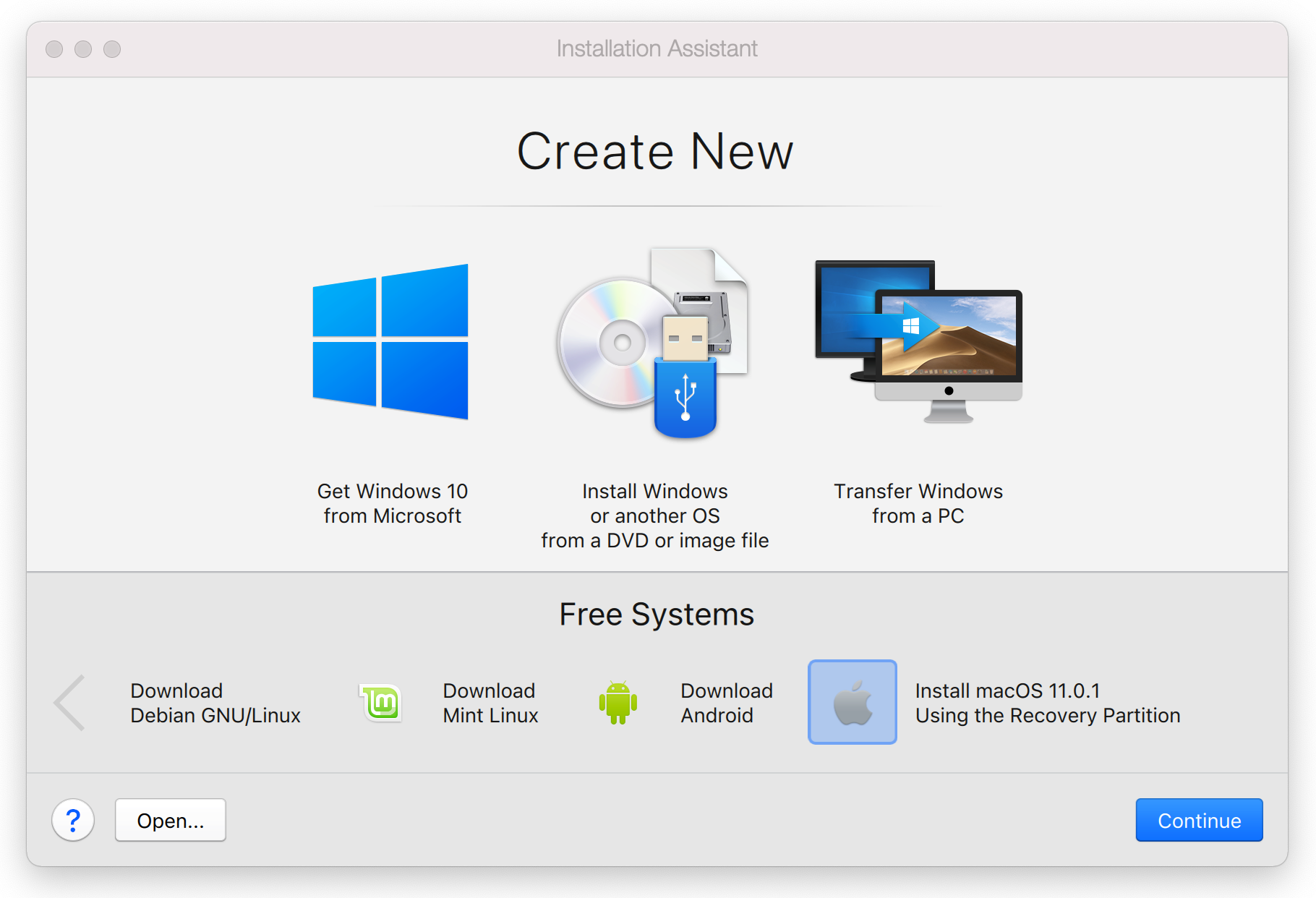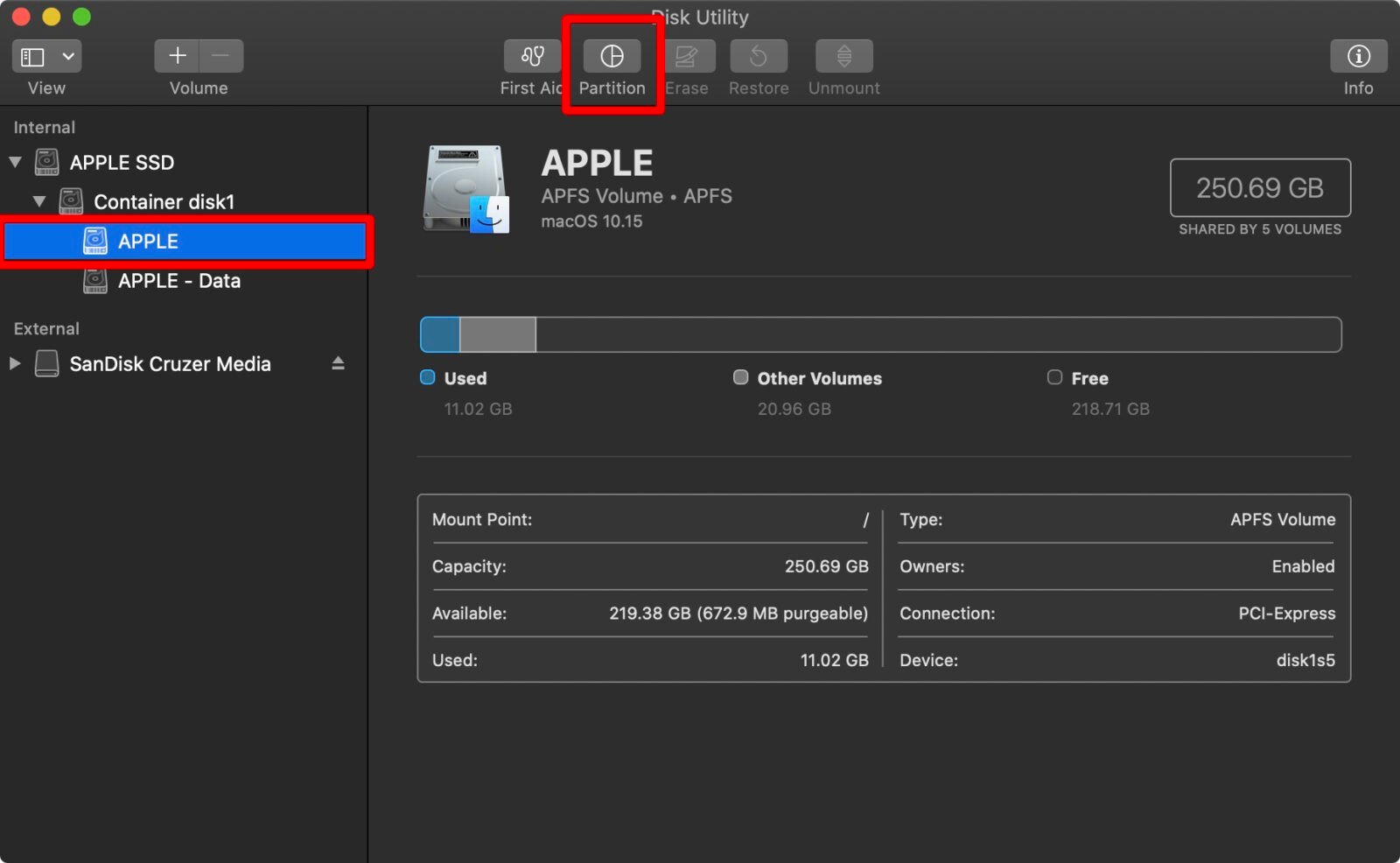

- Repartition mac os x for linux install#
- Repartition mac os x for linux driver#
- Repartition mac os x for linux iso#
- Repartition mac os x for linux download#
- Repartition mac os x for linux free#
Finish up the installer as normal, creating your user and booting in the OS. Under “Device for bootloader installation,” choose the partition you just created with the “/” mount point.Ĩ. Set “Use as” to “Ext4 journaling file system.” Set the mount point to “/”ħ.

Repartition mac os x for linux free#
Again, make sure the free space is selected and create a new partition from the remaining free space. Set the first partition’s size to 4000 MB and “Use as” to “swap.” Unsurprisingly, this will be the swap partition.Ħ. Click the “+” button to create a new partition.ĥ. Click the “-” button to delete it and replace it with free space.Ĥ. Select the partition you created on your boot disk earlier. Choose “Something Else” on the installation selection screen.ģ. Reboot your Mac, select the Ubuntu installer in the rEFInd menu, and we’re off to the races.
Repartition mac os x for linux install#
With all that accomplished, we are finally ready to install Ubuntu on our Mac! Unfortunately, high-quality screenshots were not available for these steps. You can also use Terminal to partition the drive. To get around this, you may need to remove local Time Machine snapshots. Make sure you cut off enough of the disk: 20 GB is probably the bare minimum space for a usable system with storage and application space.Īgain, it would not be unusual to encounter a Disk Utility error here. It will be overwritten as ext4 by the Ubuntu installer anyway. The partition type isn’t very important, but choose “MS-DOS (FAT)” just in case the Ubuntu installer takes some kind of issue with APFS or HFS. Click the “+” button to add a partitionģ.

Select your boot disk in the sidebar and click the “Partition” buttonĢ. f we want to dual boot macOS and Ubuntu from the same hard drive, we’ll need to make a partition for Ubuntu with Disk Utility.ġ. To install Ubuntu and dual-boot with macOS, we need to make an Ubuntu partition on our boot drive. MacBooks and MacBook Pros only have the one hard drive these days. Once we do this, we’re in data loss territory. Resizing The Boot Partition with Disk Utility If you don’t, follow the troubleshooting tips on rEFInd’s website. Reboot your Mac to make sure you see the rEFInd boot menu. Locate and drag the “refind-installer” shell script on to Terminal.
Repartition mac os x for linux download#
Download and unzip rEFInd’s binary package from SourceForge.Ģ. rEFInd will be our bootloader for both Ubuntu and macOS. Macs don’t have the easily accessible boot menu that Windows systems offer, which means we need to install our own bootloader. This is where things can start to get a little hairy. Click “Flash” and wait for your burn to complete. Click “Select Drive” and choose your USB drive.ģ.
Repartition mac os x for linux iso#
Click “Select Image” and find the Ubuntu ISO that you downloaded in the first step.Ģ. To accomplish that, we will download and install Etcher.ġ. We need to “burn” or write the filesystem of the ISO to our disk. We can’t just drag and drop the Ubuntu image to a disk. If Disk Utility persistently disagrees with you, try doing the same thing with Terminal and diskutil. If the format doesn’t work the first time, try again a second time. Set the format to “MS-DOS (FAT)” and the scheme to “GUID Partition Map.” The actual format is super important here, so don’t tweak that.ĭisk Utility is, unfortunately, a little buggy sometimes. Click “Erase” in the menu bar to format the drive.ģ. Open Disk Utility and select your USB drive in the sidebar.Ģ. We’ll format it to remove any data before creating our Ubuntu install media. The drive needs a capacity of at least 2GB, and it should be empty. We will use a USB drive for this example. They’re a great organization creating a great operating system. While your there, send Canonical a couple bucks. We want to make sure we get the AMD64 ISO file, so it will be compatible with the 64-bit chips in modern Macs. As of publication, that version is Ubuntu 16.04.4 LTS. Head over to Canonical’s website and download the most recent long-term support (LTS) version of Ubuntu. So back it up or risk your entire system. That goes double for something as invasive as re-partitioning your boot drive, which we will need to do later on. Only go ahead with this if you have the technical chops (and patience) to troubleshoot a buggy system.īefore you make any major changes to your system, you should back up your Mac.
Repartition mac os x for linux driver#
Macs can be weird under Linux, especially with the operating system’s historical lack of driver diversity. This could be core stuff, like USB-C, or minor stuff, like the Touch Bar. But be warned that some hardware functionality might never work right under Ubuntu. Linux is an amazing environment for development and programming. It’s not too hard to install Ubuntu and dual-boot a macOS/Linux configuration. Dual-booting macOS and Ubuntu requires a brave spirit, but it’s not too difficult.


 0 kommentar(er)
0 kommentar(er)
